
Really enjoyed this talk by Raphael Buosso on the cosmological constant and why "dynamical dark energy" is very unlikely youtu.be/FvRcycZAPG8?...
16.09.2025 02:12 — 👍 3 🔁 0 💬 0 📌 0@cajohare.bsky.social
senior lecturer in astroparticle physics at sydney uni. https://cajohare.com/

Really enjoyed this talk by Raphael Buosso on the cosmological constant and why "dynamical dark energy" is very unlikely youtu.be/FvRcycZAPG8?...
16.09.2025 02:12 — 👍 3 🔁 0 💬 0 📌 0
Exerpt from paper: This paper was prompted by a recent article in Nature (Mróz et al. 2024a), and an acompanying paper in Astrophysical Journal Supplement (Mróz et al. 2024b) which stated in strongly worded terms that there are no massive black holes in the Milky Way halo. The evidence to support this claim by the OGLE collaboration was at best flimsy, and under normal circumstances could have been left to the judgement of others. However, it soon became clear to us that in the absence of any critique of the arguments presented, the conclusions of the paper were widely accepted. It is not a pleasant task to expose the weakness of a publication from a well respected group such as the OGLE collaboration, but the subject is of great topical importance and we feel it is important that both sides of the argument are heard.

Title of paper: A critical analysis of the recent OGLE limits on stellar mass primordial black holes in the halo of the Milky Way
Are stellar-mass primordial black holes ruled out as dark matter? Hawkins and Garcia-Bellido launch a barrage of criticisms at the OGLE microlensing survey analysis. Some of the language used in this paper makes me wince... arxiv.org/abs/2509.05400
10.09.2025 00:06 — 👍 1 🔁 0 💬 1 📌 0Yep. All of the new parameter space probed in their fig. 2 is ruled out by astrophysical and cosmological bounds for all models, even though the stellar bound is only shown in the dark photon case.
24.08.2025 07:46 — 👍 4 🔁 0 💬 1 📌 0For those in Sydney on Saturday afternoon, I will be speaking all about cosmology and the Big Bang at this event at the very nice Chau Chak Wing Museum
12.08.2025 03:40 — 👍 6 🔁 3 💬 1 📌 0
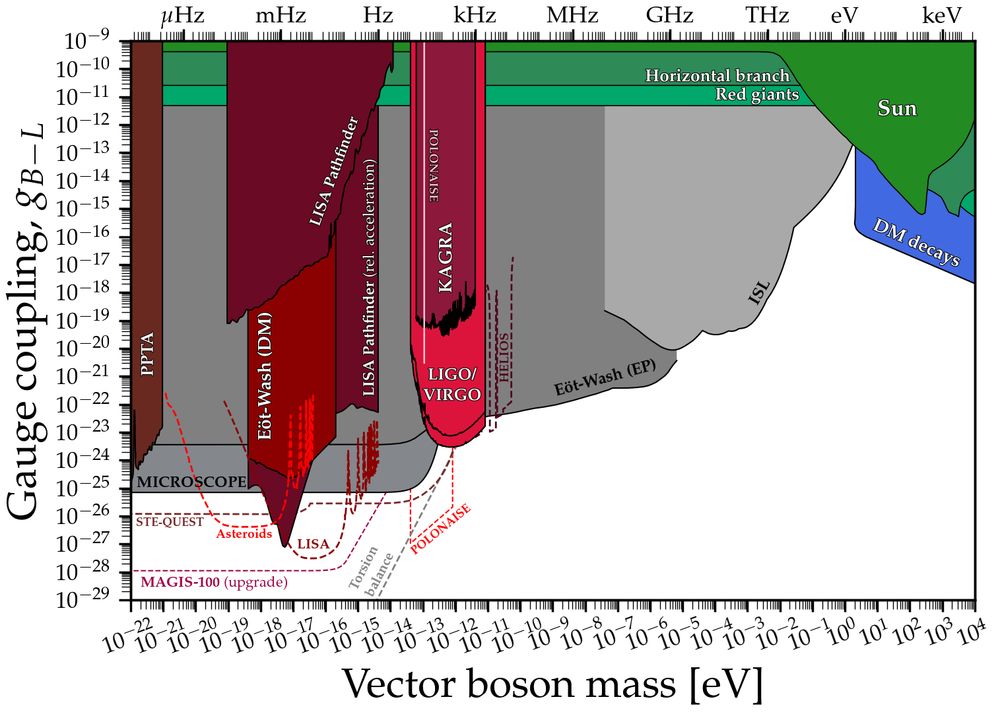


Finally, my GitHub repo is not all about axions! Many new results for dark photons, vector and scalar bosons also came out this year. I’ll leave you to go through my webpage to learn more… github.com/cajohare/Axi...
15.01.2025 08:19 — 👍 2 🔁 0 💬 0 📌 0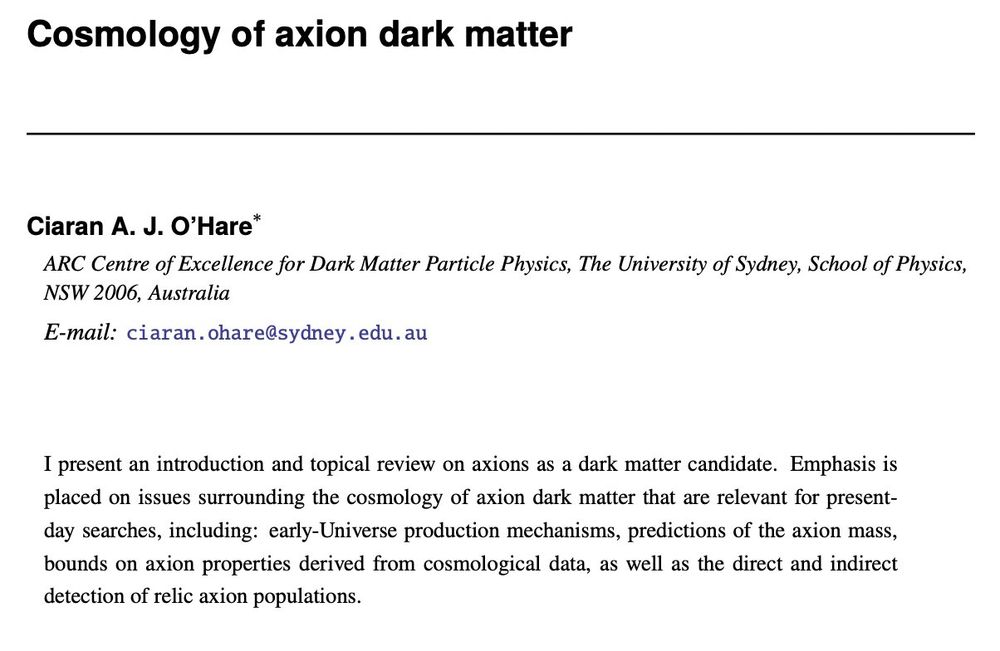


On that note I may as well plug a set of lecture notes I put out this year on axion cosmology. Go and read if you want to know more! arxiv.org/abs/2403.17697
15.01.2025 08:19 — 👍 1 🔁 0 💬 1 📌 0While there are still some disagreements when it comes to the final answer, there is a huge potential payoff here: if you can tell an experimentalist what the axion mass is then they can go and discover it almost immediately!
15.01.2025 08:19 — 👍 0 🔁 0 💬 1 📌 0


However making this prediction requires performing incredibly computationally expensive lattice simulations. The most sophisticated sims to date were presented this year by Saikawa et al (arxiv.org/abs/2401.17253) and Benabou et al. (arxiv.org/abs/2412.08699)
15.01.2025 08:19 — 👍 0 🔁 0 💬 1 📌 0
There is also a huge effort on axion theory+cosmology. One highlight is simulations of the production of axion dark matter in the early Universe. It is in principle possible to predict the mass that axion must have for it to be consistent with all the dark matter in the universe
15.01.2025 08:19 — 👍 0 🔁 0 💬 1 📌 0
An experiment from Gavilan-Martin et al (arxiv.org/abs/2408.02668) went one step further and looked for axion waves acting across a 1000 km baseline by comparing two K-Rb-3He comagnetometers located in Poland and Germany.
15.01.2025 08:19 — 👍 0 🔁 0 💬 1 📌 0
It's also possible to search for axions if they couple to other particles. For example: axions can act on nucleon spins in a similar way to magnetic fields, and so comagnetometers can be repurposed as dark matter detectors. Here are the constraints on the coupling to the neutron:
15.01.2025 08:19 — 👍 0 🔁 0 💬 1 📌 0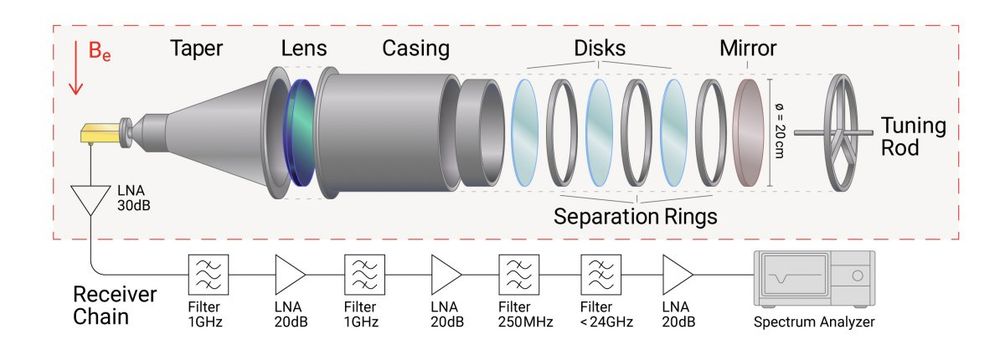

Another is MADMAX arxiv.org/abs/2409.11777, which is one of the most ambitious axion experiments currently being built. Its long-awaited first results came out this year from a smaller-scale prototype run.
15.01.2025 08:19 — 👍 0 🔁 0 💬 1 📌 0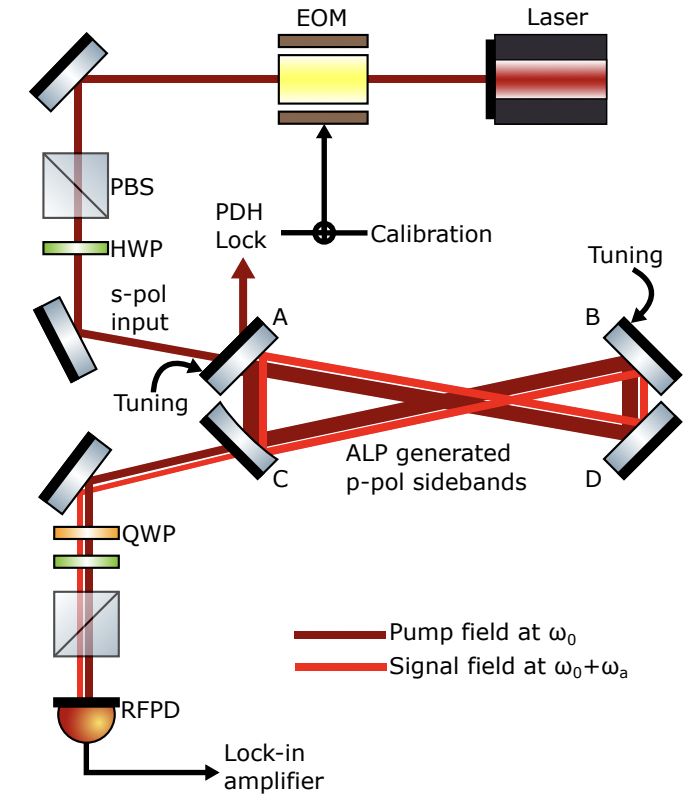

The cavity approach is the traditional one for looking for axions in the lab. But there are new groups exploring novel approaches who released first results this year. One is ADBC arxiv.org/abs/2404.12517 which uses lasers to search for the axion-induced birefringence effect
15.01.2025 08:19 — 👍 0 🔁 0 💬 1 📌 0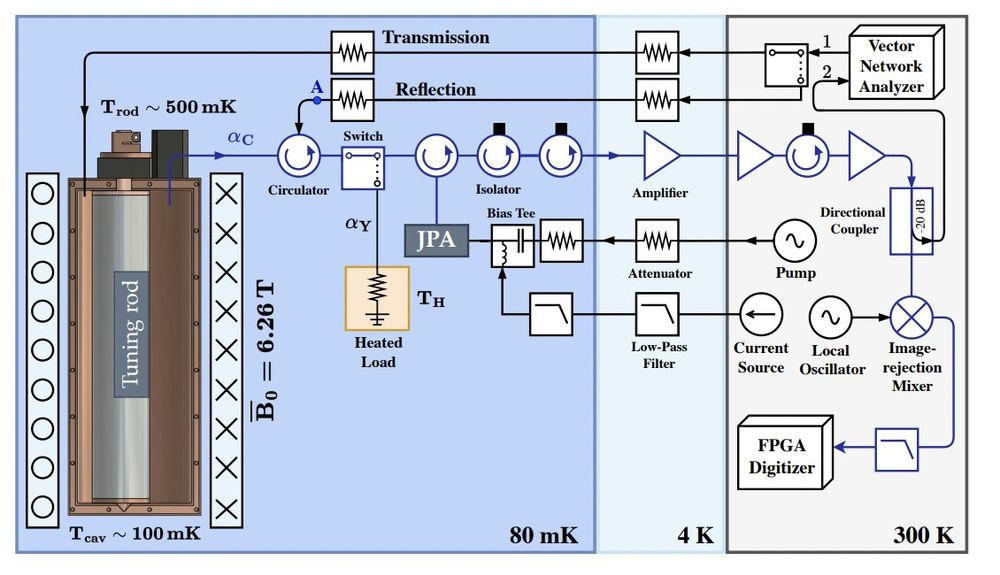
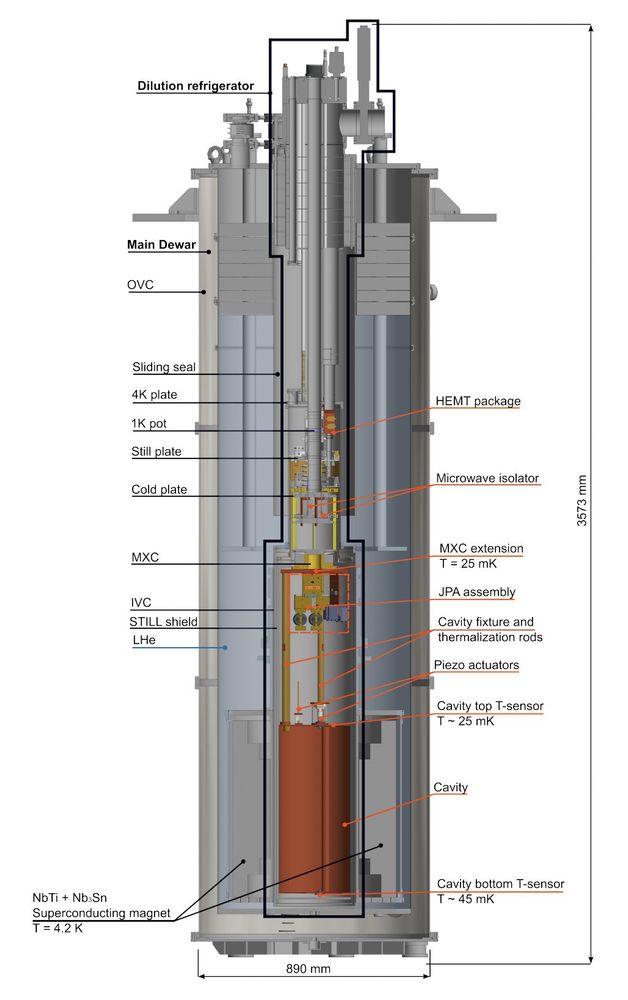

Some 2024 highlights: there were new results from ADMX, HAYSTAC, CAPP, RADES & ORGAN, using the resonant cavity approach. These are like radios where one has to tune them to just the right frequency to tap into the oscillations in the axion field we would be swimming through.
15.01.2025 08:19 — 👍 0 🔁 0 💬 1 📌 0
Of course, what everyone would love to see is an experimental detection of axions here on Earth. While this has not happened yet, the global community interested in trying to do this has grown astonishingly fast in recent years. Look at all the experiments now on my map!
15.01.2025 08:19 — 👍 0 🔁 0 💬 1 📌 0
Various collaborations searched for axion dark matter in galaxy using this birefringence effect this year. Including CMB experiments like POLARBEAR as well as pulsar timing arrays like EPTA and PPTA
15.01.2025 08:19 — 👍 0 🔁 0 💬 1 📌 0
If axions are extremely light then their decays to photons do not happen within the age of the Universe. However, the nature of the axion’s coupling to the photon means that dark matter halos act like a birefringent medium, causing the polarisation of passing photons to rotate.
15.01.2025 08:19 — 👍 1 🔁 0 💬 1 📌 0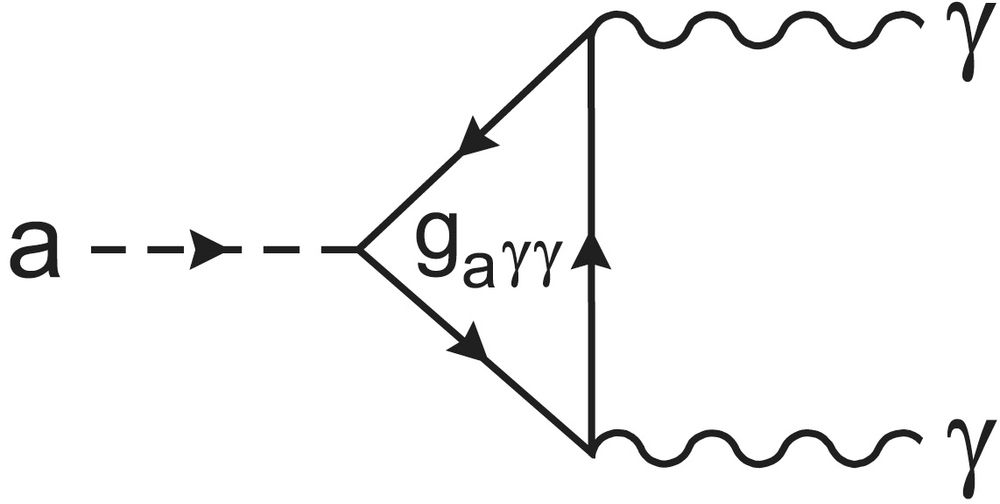


If axions are heavy, then they could simply decay into two photons with an energy equal to 1/2 the axion mass. Spectra from JWST, WINERED, HST, eROSITA and more (e.g. arxiv.org/abs/2407.10618) were used this year to look for this new spectral line in and around our galaxy
15.01.2025 08:19 — 👍 0 🔁 0 💬 1 📌 0
Axions are also excellent dark matter candidates. If galaxies are indeed enveloped by halos of axions, then there are many more ways their existence might be revealed to us.
15.01.2025 08:19 — 👍 0 🔁 0 💬 1 📌 0

There has been a lot of debate in the literature about how to draw these constraints robustly. Many of these issues were settled in this thorough theoretical treatment of the axion cloud formation by Witte & Mummery arxiv.org/abs/2412.03655
15.01.2025 08:19 — 👍 0 🔁 0 💬 1 📌 0
A fascinating technique to exclude axions is to use the fact we see black holes spinning. If axions have a Compton wavelength similar to the Schwarzchild radius of a BH, then a cloud of them can be excited from the vacuum at the cost of the BH’s spin. This is called "superradiance"
15.01.2025 08:19 — 👍 0 🔁 0 💬 1 📌 0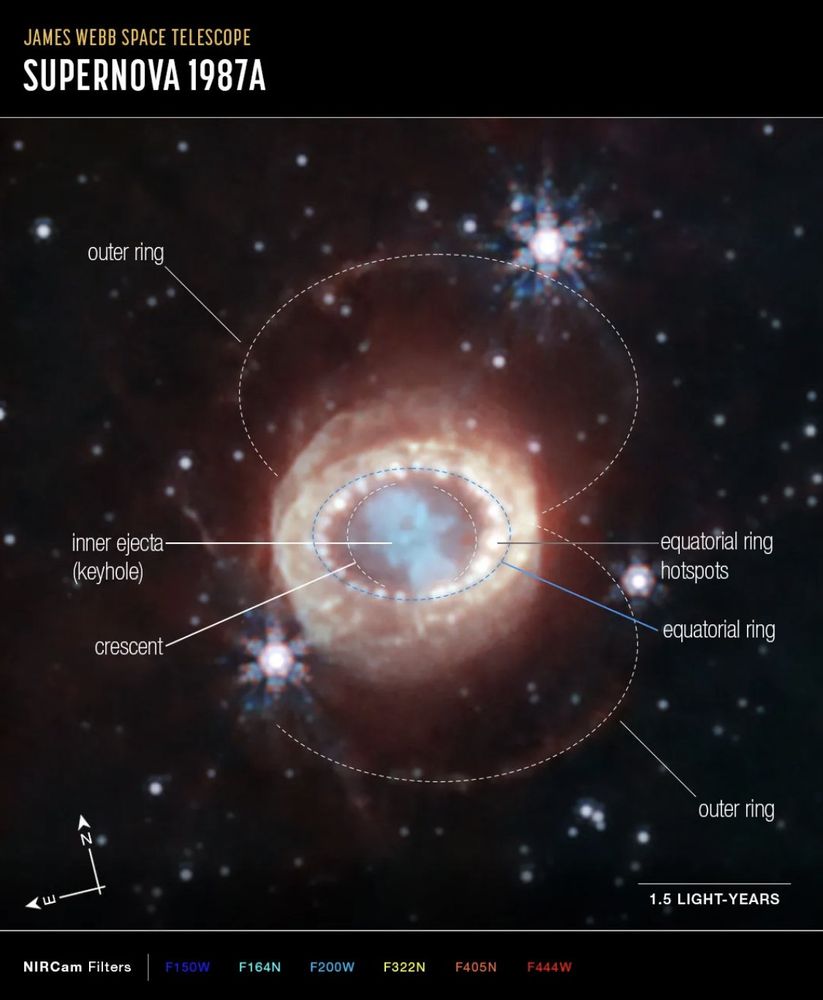
As an aside, it continues to amaze me how much a single event from almost 40 yrs ago is still one of the best laboratories for testing new physics. Needless to say, the next galactic supernova will be a major event and will generate a lot of papers (and maybe even a discovery?)
15.01.2025 08:19 — 👍 1 🔁 0 💬 1 📌 0
Manzari et al arxiv.org/abs/2405.19393 improved constraints from the 1987 Supernova. Axions produced in the explosion converting into photons would have been seen in a gamma-ray spectrometer on NASA’s Solar Maximum Mission which happened to be looking in that direction at the time
15.01.2025 08:19 — 👍 1 🔁 0 💬 1 📌 0

It’s not all about high-energy astrophysics. This study by Goldstein et al arxiv.org/abs/2409.10514, explored how CMB photons could convert into axions as they traverse the Universe, leading to a “patchy screening” effect observable by cross-correlating the CMB with galaxy maps
15.01.2025 08:19 — 👍 1 🔁 0 💬 1 📌 0

NuSTAR continues to prove itself to be one of the most useful instruments to search for axions. Another study by Ruz et al arxiv.org/abs/2407.03828 used data from the Sun to look for axions produced in the core, which its magnetic field would then convert into photons
15.01.2025 08:19 — 👍 1 🔁 0 💬 1 📌 0
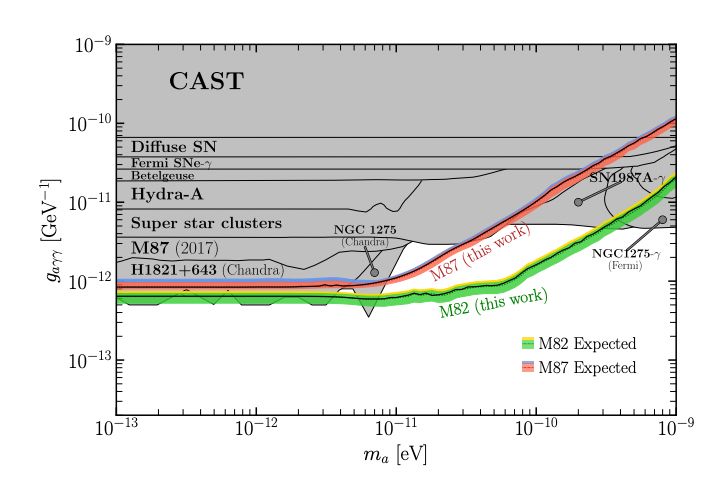
Several studies advanced these techniques this year, including this new strong constraint from Ning & Safdi arxiv.org/abs/2404.14476. They looked at data from the NuSTAR X-ray telescope to see if there was evidence of the starburst galaxy M82 producing axions.
15.01.2025 08:19 — 👍 1 🔁 0 💬 1 📌 0
One of the best ways to find axions is to see if they are being produced in astrophysical environments. Axions can be generated by astrophysical plasmas, and in the presence of a background magnetic field, axions also exhibit a mixing phenomenon with the regular photon.
15.01.2025 08:19 — 👍 1 🔁 0 💬 1 📌 0
I added over 50 new constraints this year, bringing the total number of refs in the library to around 500! Here is how the status of limits on the axion's coupling to the photon has advanced from 2020 until now... In this thread I'll go through some personal highlights from 2024
15.01.2025 08:19 — 👍 4 🔁 0 💬 1 📌 0
2024 was yet another exhausting year keeping track of updates on our quest to find the axions. I have been trying my best to collect the exponentially growing literature on my GitHub AxionLimits: github.com/cajohare/Axi...
15.01.2025 08:19 — 👍 35 🔁 11 💬 3 📌 2
In our latest episode we chat with Ciaran O'Hare (University of Sydney) about #darkmatter, quarks, and the Venn diagram of #astronomy and particle #physics.
If you watch closely you can see the exact moment @scienceactually.bsky.social mind gets blow
open.spotify.com/episode/7dDO...